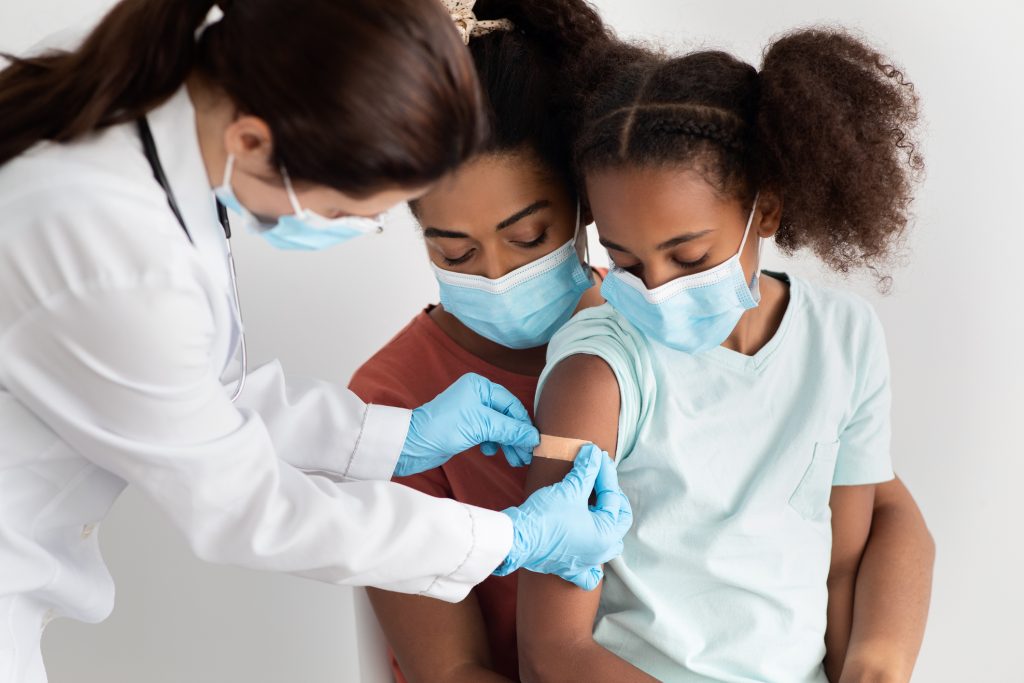COVID-19 isn’t over – but we are no longer in a state of emergency
June 12, 2023This article is written by guest contributor Dr. Mark Steffen, senior vice president and chief medical officer at Blue Cross and Blue Shield of Minnesota.
From the very first days of the coronavirus pandemic in early 2020, Blue Cross and Blue Shield of Minnesota rallied to help protect the health of our members and communities.

In partnership with employer clients and public health agencies, Blue Cross and Blue Shield of Minnesota led an investment of more a billion dollars to cover costs related to testing, vaccinations and treatment. Our goal was to ensure that the cost of healthcare – as well as access to healthcare – would not create barriers for anyone during the pandemic.
As a health plan, we implemented multi-year waivers to cover all in-network COVID-19 treatment – including office visits and hospitalizations – at no cost to members. To help stabilize the healthcare system during the related economic downturn, Blue Cross dedicated more than $150 million in premium relief credits, premium rebates and accelerated payments that reached members, employers and the healthcare providers within our network.
As a community partner, we acted as a convener. When mRNA vaccines first became available to all adults in the spring and summer of 2021, Blue Cross teamed up with the Minnesota Department of Health and Metro Transit to launch a mobile clinic program. Utilizing converted Metro Transit buses, we helped to bring vaccines directly to rural locations and at-risk populations. In just a few months, volunteer clinicians administered thousands of vaccines in more than 40 Minnesota counties.

In 2021, Blue Cross volunteers worked alongside community partners to launch a mobile vaccine clinic program that reached 42 counties throughout Minnesota.
Now, after prolonged and sustained public health efforts, Minnesota and the rest of the nation are seeing COVID-19 infections plummet to their lowest levels since the very onset of the pandemic.
On May 11, 2023, the federal department of Health and Human Services (HHS) brought an end to the national Public Health Emergency in response to COVID-19. By any measure, the toll on our country has been devastating. To date, there have been 104 million cases, 6 million hospitalizations, and 1.1 million reported COVID-19 associated deaths. Study after study showed that people of color experienced a disproportionate burden of the disease.
Some stark realities remain. Undoubtedly, this will not be the last global pandemic to occur. The best we can do is mitigate the known risks. Keep in mind, it was around one year ago – in the summer of 2022 – when case levels began to spike again, due to the highly transmissible omicron subvariant. It then took several months before case levels once again began to decline.
The end of the public health emergency also means that the Center for Disease Control (CDC) will stop collecting and reporting specific types of health data related to the coronavirus. While the CDC stated that COVID-19 “no longer poses the societal emergency that it did when it first emerged,” it emphasized how the virus “remains an ongoing public health challenge.”
COVID-19 is still technically categorized as a global pandemic. There is debate as to when it should be downgraded to an “endemic” virus – which is a constant but relatively controllable health risk across the broader community. An exact transition can be hard to define, as it usually takes place over a prolonged a period of time. Regardless of whether we call it a pandemic or endemic, we do know that new cases of COVID-19 are still happening and will likely continue to occur for some time.
COVID-19 related coverage changes
So while the virus remains a health threat, it is no longer in a state that requires emergency-level responses. As a result, most of the COVID-19 coverage requirements implemented under the Public Health Emergency are no longer in effect. For most people, standard plan benefits now apply to COVID-19 related care, including tests, vaccines and treatment.

Medical care and laboratory testing
At Blue Cross, cost sharing for medical appointments, testing (lab testing for either the virus or antibodies) and treatment related to COVID-19 (office visits, urgent care, telehealth and emergency room treatment) are now being administered through standard plan benefits – so copayments, coinsurance or deductible amounts now apply as they would for all other types of care.
Vaccines
COVID-19 vaccines and vaccine boosters are now categorized as a preventive benefit, just like seasonal flu shots. This means Blue Cross will continue to cover 100% of the vaccine cost when administered at an in-network provider.
It may never be accurate to say we are shifting “back to normal.” Too much has changed for anyone to think everything can go back to exactly as it was before 2020. However, I am increasingly optimistic in believing that the worst is truly behind us.
The emerging post-pandemic era presents many opportunities for the healthcare industry to re-examine what the best path forward is for everyone. It is clear that we have opportunities to improve, especially in areas such as health equity. At Blue Cross, we remain more committed than ever to helping all our members receive the care they need, both now and in the future.
Learn more about what coverage changes went into effect after the end of the Public Health Emergency.


